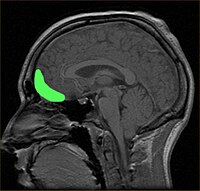
Photo from wikipedia
HighlightsThe rat risky decision‐making task reveals widespread variability in performance.Risk‐taking rats exhibit elevated impulsive action, but not impulsive choice.Habit formation is not associated with risky decision‐making.Risk‐taking predicts locomotor sensitivity to… Click to show full abstract
HighlightsThe rat risky decision‐making task reveals widespread variability in performance.Risk‐taking rats exhibit elevated impulsive action, but not impulsive choice.Habit formation is not associated with risky decision‐making.Risk‐taking predicts locomotor sensitivity to first‐time nicotine exposure.Risk‐taking rats are less sensitive to nicotine’s anxiogenic properties. Abstract Excessive risk‐taking is common in multiple psychiatric conditions, including substance use disorders. The risky decision‐making task (RDT) models addiction‐relevant risk‐taking in rats by measuring preference for a small food reward vs. a large food reward associated with systematically increasing risk of shock. Here, we examined the relationship between risk‐taking in the RDT and multiple addiction‐relevant phenotypes. Risk‐taking was associated with elevated impulsive action, but not impulsive choice or habit formation. Furthermore, risk‐taking predicted locomotor sensitivity to first‐time nicotine exposure and resilience to nicotine‐evoked anxiety. These data demonstrate that risk preference in the RDT predicts other traits associated with substance use disorder, and may have utility for identification of neurobiological and genetic biomarkers that engender addiction vulnerability.
Journal Title: Behavioural Brain Research
Year Published: 2019
Link to full text (if available)
Share on Social Media: Sign Up to like & get
recommendations!